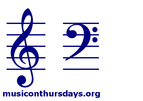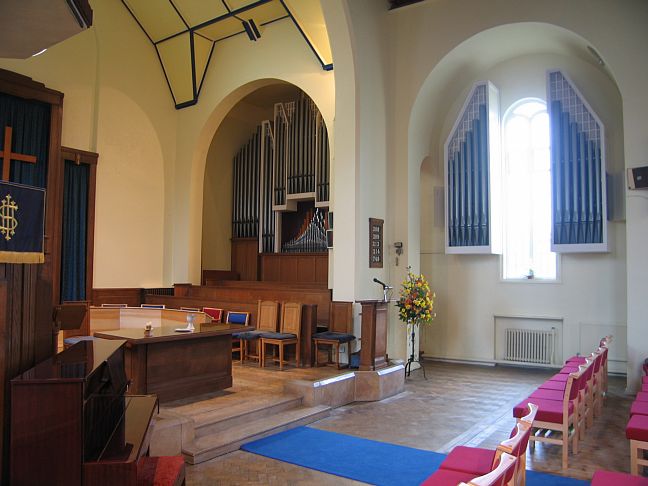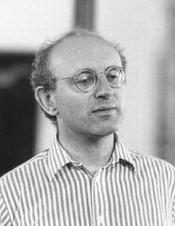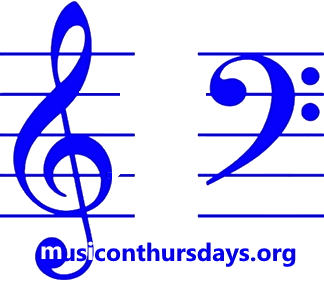Wednesdays at Christ Church
Wednesday 17th July 2013 - 12.30 Lunchtime Concert

Robert Woolley, organ
plays Sweelinck, Scheidt, Handel and Bach
|
Robert Woolley is one of Europe's leading performers and teachers of the harpsichord and other early keyboard instruments. He was born in London and studied at the Royal College of Music, where he is now Professor of Harpsichord and Clavichord, and was Director of the Early Music Department and Adviser for Early Music from 1985-2006. He is well known as a soloist, chamber musician and orchestral player on the harpsichord, organ and fortepiano; his solo recordings include discs of music by Tallis, Byrd, Gibbons, Frescobaldi, Weckmann, Bohm, Handel, J S Bach, Scarlatti, Seixas and J C Bach for EMI, Virgin, Archiv, Hyperion and Chandos. He made the first complete recording of Purcell’s harpsichord works, followed by a disc of Restoration organ works played on the Thomas Dallam organ in Guimiliau, Brittany, and a recording of the harpsichord works by John Blow from manuscript transcripts made by Harold Watkins Shaw. Robert Woolley’s acclaimed discs of the six Partitas by J S Bach, together with the first volume of Sweelinck's complete keyboard music were recently released. This was recorded on the 17th century organ of the Pieterskerk, Leiden, currently the largest organ in the world tuned to meantone temperament, and will be followed by a disc of works for virginal and harpsichord. He has given concerts and masterclasses in the UK, USA, Japan, Austria, France, Italy, Portugal, Belgium, Holland, Spain, Switzerland, Czechoslovakia and Hungary, and was a member of the Jury of the Prague Spring International Harpsichord Competition. He regularly broadcasts for the BBC, and recently played and discussed music from the newly discovered Froberger autograph on Radio 3’s Early Music Show. Robert Woolley co-founded the Purcell Quartet in 1984, with which he has made many recordings for Chandos, including the complete concertos for harpsichord by J S Bach. The Quartet regularly tours Europe, the USA, South America and Japan and has played at most of the major UK and European Festivals. They were invited to give a programme of Bach Cantatas at the Wigmore Hall, London on the 250th anniversary of the composer's death, and recently travelled to Germany to perform some of JS Bach's Weimar cantatas in the Frauenkirche, Dresden, the Bach Church in Arnstadt, and Sribnica in Poland. Robert’s students include: Robin Bigwood, Laurence Cummings (Head of Historical Performance, RAM), Bridget Cunningham, Kaori Kikuchi, Giulie Nuti, Hirono Tozaki, David Wright and Sophie Yates. |
|
Programme Notes by Prof. Robert Woolley
Professor of Harpsichord and Clavichord Royal College of Music, Organist of St Mary’s Church, Stoke d’Abernon, Surrey Jan Pieterszoon Sweelinck (1562-1621) was a Dutch composer, organist, and pedagogue whose work straddled the end of the Renaissance and beginning of the Baroque eras. Sweelinck was among the first major keyboard composers of Europe. Sweelinck’s teaching activities helped establish the North German Organ School. His German students included Samuel Scheidt, Heinrich Scheidemann, Melchior Schildt, Jacob Praetorius II, and Anders Duben among many others. In turn Scheidemann taught Reinken and Buxtehude, who JS Bach admired. Students of Sweelinck were seen as musicians against whom other organists were measured. Sweelinck was known in Germany as the "maker of organists." Sociable and respected, he was in great demand as a teacher. Sweelinck's influence spread as far as Sweden and England, carried to the former by Andreas Duben, and to the latter by English composers such as Peter Philips, who probably met Sweelinck in 1593. Sweelinck had connections with the English school of composition. His music appears in the Fitzwilliam Virginal Book, which otherwise only contains the work of English composers. He wrote variations on themes which were well known in England, including John Dowland’s Lachrimae Pavane, English Fortune, and the Spanish Pavan. John Bull, an English émigré who became organist of Antwerp Cathedral and was probably a personal friend, wrote a set of variations on a theme by Sweelinck after the death of the Dutch composer. Sweelinck was appointed organist of the Oude Kerk 1577-1580, stayed for the rest of his life. After death of his father. Calvinist services did not typically include organ playing. However, the Consistory of Dordrecht of 1598 instructed organists to play variations on the new Genevan psalm tunes before and after the service so that the people would become familiar with them. Sweelinck was employed not by the church but by the city itself. and gave regular recitals at the Oude Kerk. Sweelinck's keyboard style was influenced mostly by two major trends: Italian vocal polyphony and keyboard toccatas, and English virginal composers, such as Byrd, Bull, Philips and William Brown. Sweelinck’s toccatas were a new form in the North Netherlands, and were influenced by the Venetian toccatas of Andrea and Giovanni Gabreli. The toccata a3 was later revised by Sweelinck with a fourth voice judiciously added in certain parts of the work. This toccata is the most distant from the Venetian models: Sweelinck here stretches the Venetian toccata concept to its limits, realising his ideas about a sophisticated, independent keyboard piece. The variations on O Gott du unser vater bist Is probably a late work. The 1st variation is a cantus planus, where the theme is heard without ornamentation, while the 2nd variation is a cantus coloratus. The long rests between phrases, and ‘personal’ character of a prayer, might have induced Sweelinck to choose a correspondingly ‘subjective’ composition technique using florid ornamentation. The Fantasia in A minor is probably the earliest of Sweelinck’s four authenticated and extant chromatic fantasias. The theme itself derives from a Fantasia for lute by Gregory Huwet, and is heard in normal values, halved, doubled and quadrupled note values. Augmented entries in the tenor and bass voices are played on an 8’ pedal reed. The pedal division of the large organ built by Niehoff in 1540-42 in the Oude Kerk, Amsterdam only had two stops – an 8’ trumpet and 2’ Nachthoorn - both for reinforcing fantasia and variation themes. The pedal department was not the familiar bass division found in later organs. |
Samuel Scheidt (1587-1654): Ballett del Granduca
Scheidt was born in Halle, and after early studies there, he went to Amsterdam to study with Sweelinck. On his return to Halle, Scheidt became court organist, and later Kapellmeister, to the Margrave of Brandenburg. He was appointed in 1628 as musical director of three churches in Halle, including the Market Church. Scheidt was the first internationally significant German composer for the organ, and represents the flowering of the new north German style, which occurred largely as a result of the Protestant reformation. The Ballett is paradoxically Sweelinck’s most popular work! But it strongly reflects the more rigorous style of Scheidt The title comes from a dance in 1589 titled Oh che nuovo miracolo (Oh that new miracle), also known as Aria di Fiorenza or Ballo del Granduca, intermedio della commedia La Pellegrina, composed by Emilio de 'Cavalieri on the occasion of the wedding of Ferdinando I de' Medici and Christine of Lorraine. The ballo of Emilio de 'Cavalieri rapidly acquired a reputation in Europe, being taken as a model by composers such as Adrian Bankers, Giovanni Girolamo Kapsberger and Jan Pieterszoon Sweelinck. George Frideric Handel (1685-1759) Handel was also born in Halle and had a kapellmeister’s training, learning with Zachau. He was never a church organist and his works for organ are almost exclusively concertos. However, a number of his keyboard works are equally effective on organ or harpsichord. Jesu Meine Freude, composed in 1736-40, is Handel’s only surviving chorale prelude, with the theme in the middle voice. The voluntary on a Flight of Angels, c,1730-1740 was composed for a splendid clock organ made by Thomas Clay, which played a voluntary every hour. An example can be seen at Windsor Castle. The Air in Bb is from an autograph of c.1738, and was then re-used in an orchestral sinfonia c.1746-7, and almost immediately after that in the organ concerto Op 7 No 6 Johann Sebastian Bach (1685-1750): Piece d’Orgue or Fantasia in G BWV 572 This is one of Bach’s finest early keyboard works. It has a complex pedigree, but some think the familiar version with pedals throughout the second and third sections may be an arrangement by a later composer as a conventional pedaliter work, and that it may have begun life as a piece for pedal harpsichord (owing to a bass note which never existed on the organ, together with the repeated pedal notes in the last section, which are not necessary or effective on an organ pedal reed, and may date from the first (harpsichord) version). The neutral title suggests a new form, and the first section is a brilliant Italianate toccata, the middle section is like a Grand Plein Jeu by de Grigny, and the last section consists of arpeggios in the manner of the French clavecinistes. In this version from the manuscript of Bach’s cousin JG Walther, the tempo markings are reversed (the second section marked gaiment, the third section marked lentement. The pedal is only used from the long pedal point near the end of the second section. As a conjecture, a pedal note is held throughout the first section, as in works by some Italianate North German composers. |
|
Link to venue information
|
For details of more local and national organ concerts please click on this logo :
|











